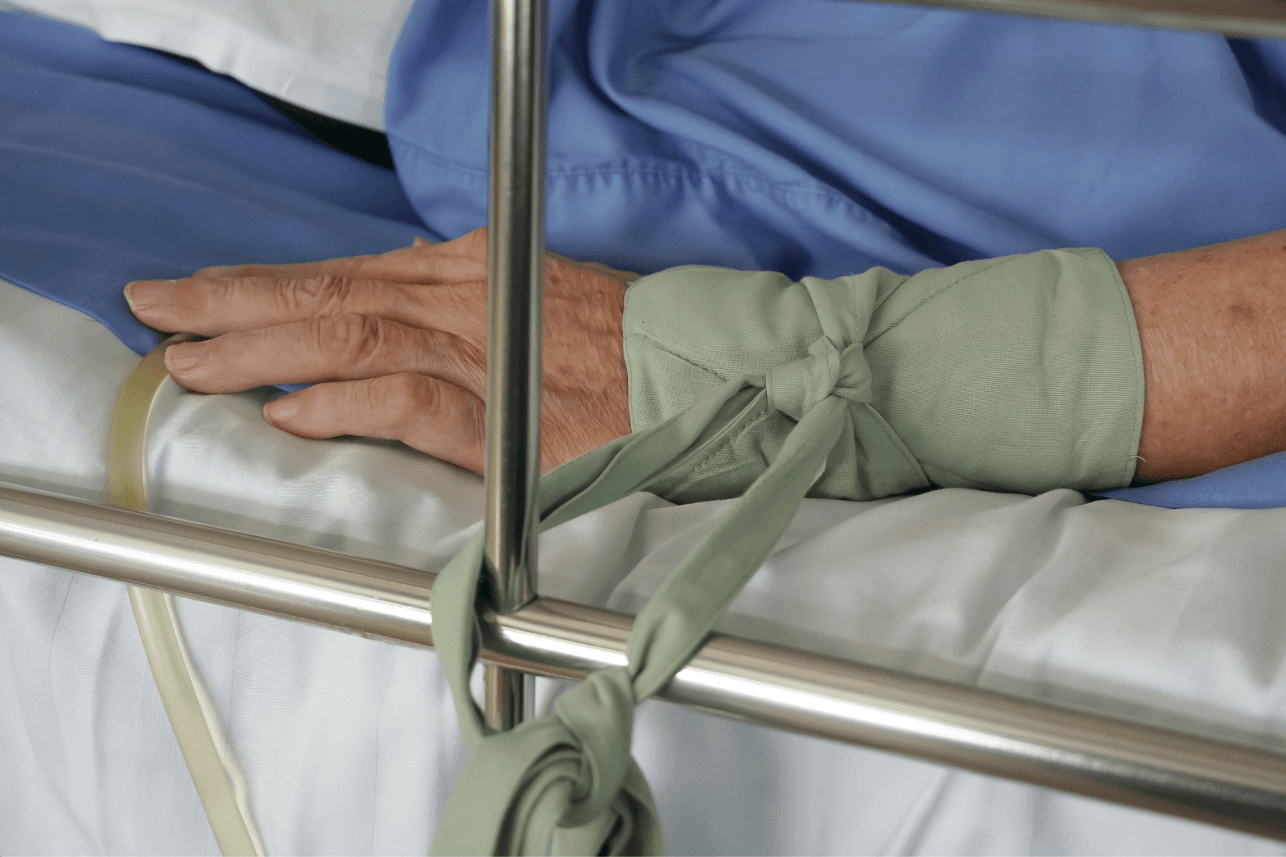DEAR VANESSA,
Are there laws that prohibit the unnecessary use of restraints? My mother has dementia and is a fall risk. She is moving to a nursing home soon. Thank you.
-ELLA
DEAR ELLA,
Restraints can either be physical or chemical. Physical restraints are items or devices that are attached or adjacent to a person’s body to restrict movement, such as leg and arm restraints, hand mitts, vests and soft ties, hook and loose fasteners on clothing, lap trays and wheelchair belts, and bed rails. Physical restraints also include methods or practices like moving a wheelchair against a wall so the person cannot back up or move, using a bedrail to prevent the person from getting out of bed, or tucking in a bed sheet so tightly that the person cannot move. These restraints, although they may prevent falls and accidents, can pose risks. They can make the person feel stressed, agitated, and powerless. Other problems include incontinence, constipation, poor circulation, loss of muscle tone, reduced bone mass, pressure sores, depressed appetite, decreased mobility, stiffness, and increased illness. Restraints also decrease the person’s independence and social contact, which may lead to loss of dignity, frustration, withdrawal, depression, and anxiety.
Chemical restraints are drugs used to control a person’s behaviors or to sedate or subdue a person. Psychoactive drugs, which affect emotions or behavior, are often used for this purpose. Psychoactive drugs are often mis-used on residents who have dementia to control behavior that is simply their way of expressing discomfort, distress, or unmet needs.
Nursing home laws prohibit the unnecessary use of restraints. A nursing home cannot use restraints without the resident’s legal or informed consent, except in an emergency. Residents cannot be subjected to any type of restraint that is imposed for discipline or convenience (as opposed to necessity). A restraint may only be used if the resident’s doctor has ordered it to treat medical symptoms, and only if the restraint will help the resident function at his or her highest level. Physical restraint should be used as little as possible, and only in cases where no other safety techniques would be as efficient. Note that residents have the right to accept or refuse any type of care or treatment, including restraints.
Restraints can be dangerous. Be involved. Participate in your mother’s care planning. If a restraint is considered, ask how it will help your mother function. When deciding whether restraint use is appropriate, consider the alternatives rst and ask questions.
-VANESSA
